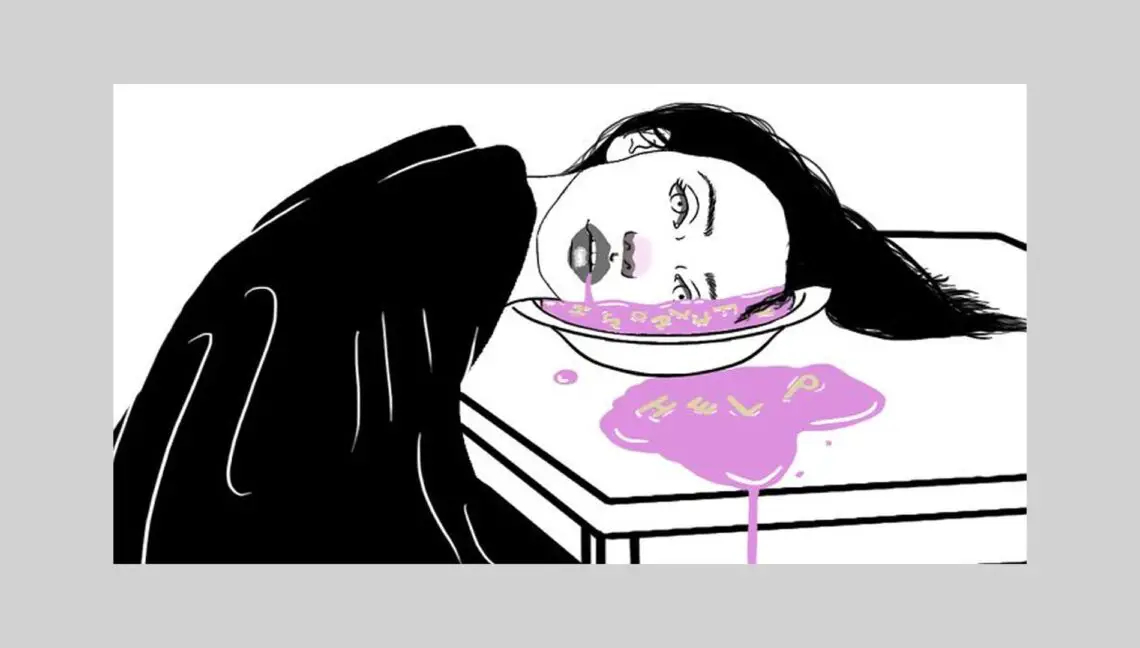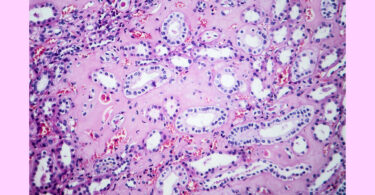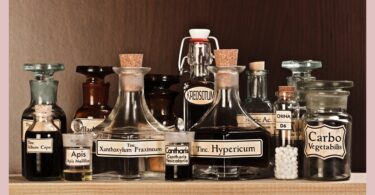A case cured by a high potency was very remarkable. Miss A., age 30, suffered for nearly two years with fibris intermittens quartana. The attacks were very violent with great thirst. This was succeeded by great prostration, and she was much reduced and debilitated. All medical aid had been of no avail. I was consulted. I discovered as probable cause an attack of itch driven in by inunctions. I gave Nat. mur, 200, more especially on account of the great thirst during the attacks, A week after, small fine vesicles appeared between the fingers where itch usually appears; they itched very much and resembled closely the vesicles of itch. After this eruption the attacks ceased; the complaint of several years’ standing was cured by one dose of medicine. The remarkable feature of this case was that with the appearance of the eruption the complaint ceased.
A similar effect has also been observed after other remedies — Sulphur, Kali carb., Arsenicum, Sepia , etc., and it is usually followed by favorable results. What is the cause of this? Is there really a foreign body in the organism which must be thrown to the surface of the skin before a cure can be effected, or, in other words, must a cleansing of the body from these foreign substances take place before a cure is possible, or are these eruptions merely casual accompaniments of the recovery and of no value in the curative process? This question has not yet been definitely settled. If, however, the oft-repeated observation is taken into consideration that the suppression of eruptions of the skin, of sores, etc., is frequently followed by the most terrible sicknesses, often endangering life, and that as a rule there is no amelioration of these until one succeeds in re-establishing the suppressed manifestations of the skin by the appropriate Homoeopathic remedy, their considerable value in therapeutics cannot be questioned. Every busy physician has surely repeatedly convinced himself of this in practice. I will give one case of many:
A fine, healthy child, age. 2, was suddenly taken sick in a most violent manner. I was called and found a fully developed inflammation of the lungs. Aconite, followed by Tartar emetic, were almost without effect, so I concluded that there must be some hidden point, and I redoubled my researches. Finally the mother stated that the child had been sore in the folds of the skin of the neck, and that she had cured it by applying lead water. I immediately gave one drop of Sulphur tincture 30th. The night passed easy and in the morning the formerly sore folds in the neck reddened again and soon the soreness was established as bad as before, and in the same degree the inflammation of the lungs became better, so that the child was well again within four days. In this case the eruption was driven away intentionally, but the mother was unaware of the danger of doing so. She was vain of her beautiful child, and did not want to have it disfigured by such an eruption. There are also cases when an eruption, tetter, or sore, of long standing, ceases without any seeming cause, in which case, as a rule, a serious sickness follows.
So in a case of a lady, age 70, who became a prey to deepest melancholia on the disappearance of a scaly, itching tetter of the scalp and behind the ears. Her usual buoyant spirits were gone and she would sit by the hour brooding in a corner. She had no appetite, the tongue being heavily coated. Stool was voided every seven or eight days, and she could not sleep. She received Arsenicum, whereupon the old tetter slowly reappeared and with it her good spirits returned, the melancholia disappeared in about a week. After having been well for over a year she sickened and got well again in precisely the same manner. Who will doubt that the tetter was the cause of this transformation?
In such cases it is of paramount importance that a thorough knowledge be acquired of the remedies known to cause eruptions of the skin, whether they have been present before, at any one time, or not. Sulphur, Lycopodium, Kali carb and more especially Arsenicum, will be found of special use. Jahr already drew attention to it, and gave several fine cases wherein Arsenicum proved to be effective. I have observed that Arsenicum is able to produce all sorts of eruptions and affections of the skin, from the simple roseola, erysipelas, urticaria, to tetters, both moist and dry, etc. I often observed that in urticaria, especially if it has become chronic, Arsenicum is a chief remedy, of course other indications must also be present, for neither it nor any other remedy could be recommended in a general way.
Such experiences in noting the harmfulness of suppressed affections of the skin and the usefulness of their reappearance force the conclusion that the human organism frequently selects the skin as the dumping ground, so to say, of foreign and noxious matter, and that by this operation relative health is attained.
Carcinoma and cancer afford similar observations. Life will be bearable as long as the local deposits are let alone, while by an operation it frequently is cut short, because then these deposits infest internal organs, such as the brain, liver, etc., in consequence of which life is made impossible. A number of eminent surgeons have been induced by such experiences to forego operations in such affection, except in the most urgent cases. We Homoeopaths should be the more on our guard against applying remedies externally in all cases of tetters, sores, or other affections of the skin, because we obscure our field of observation. For if a tetter or old sore yields to such applications we are never sure whether the internal cause of the trouble has been removed, and this is of most importance.
Translated for the Homoeopathic Recorder Volume IX 1894




